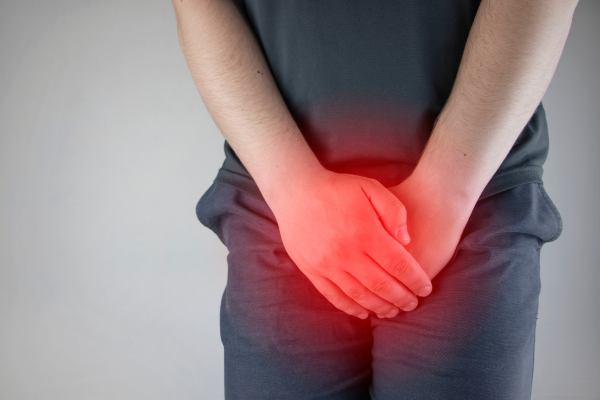How to Treat Chancroid?
- December 12, 2023
- No Comments

What is Chancroid?
Chancroid, commonly known as a soft chancre, is the result of a bacterial infection caused by Haemophilus ducreyi. This infection categorizes as a sexually transmitted disease (STD) or infection (STI), signifying its transmission through sexual contact. While it is not as prevalent as some other STIs, the intricacies of chancroid lie in its potential complications and its role in facilitating the transmission of other infections, including the formidable HIV.
Why Chancroid Occurs?
- Chancroid primarily emerges from intimate encounters, firmly placing it within the domain of STDs. Haemophilus ducreyi, with a penchant for the genital and anal mucous membranes, orchestrates the formation of painful ulcers or sores. The inherent contagiousness of these sores raises concerns about transmission through unprotected sexual activity, underscoring the imperative nature of safe practices.
- Transmission dynamics underline the vulnerability linked with unprotected sexual intercourse, emphasizing the symbiotic relationship between personal health and the prevention and management of sexually transmitted infections. Individuals with compromised immune systems find themselves at an augmented risk, underscoring the importance of overall health in the context of STIs.
Manifestations of Chancroid:
- Chancroid paints a clinical picture marked by the emergence of painful ulcers or sores in the genital and anal regions. These ulcers, characterized by their soft texture and irregular borders, add an extra layer of discomfort. Swelling of the lymph nodes in the groin intensifies the physical and emotional toll on individuals grappling with this infection.
- The temporal aspect of chancroid's manifestation is noteworthy, with symptoms typically surfacing within a week post-exposure to the bacterium. The ulcers, varying in size and shape, manifest as tangible indicators of the infection. The spectrum of pain and tenderness associated with these sores is diverse, underscoring the subjective nature of the affliction.
Treatment Odyssey for Chancroid:
The journey towards healing from chancroid navigates through a triad of essential treatment modalities.
- Antibiotic Therapy: At the forefront stands antibiotic therapy, the linchpin of chancroid treatment. The prescription of antibiotics such as azithromycin or ceftriaxone is commonplace, aimed at eradicating the Haemophilus ducreyi bacteria orchestrating the infection. The cardinal rule governing this therapeutic avenue is the completion of the full antibiotic course, an indispensable step to thwart the emergence of antibiotic resistance and to ensure the sustained annihilation of the infecting agent.
- Pain Management: Concurrently, pain management assumes a pivotal role in alleviating the discomfort arising from the ulcers. Over-the-counter pain relievers, including acetaminophen or ibuprofen, emerge as allies in this facet of treatment. Healthcare providers may, in certain cases, prescribe topical anesthetics or numbing creams to deliver targeted relief from the throbbing pain.
- Avoidance of Sexual Activity: As an integral component of chancroid treatment, individuals diagnosed with the infection are counselled to observe a hiatus from sexual activity until the complete healing of the sores. This not only acts as a shield, protecting potential sexual partners from exposure but also reinforces the effectiveness of antibiotic treatment sans the looming threat of reinfection.
Benefits Woven into Chancroid Treatment:
Embarking on the therapeutic trajectory for chancroid bestows a multitude of benefits upon those navigating this medical terrain.
- Resolution of Symptoms: Foremost among these benefits is the resolution of symptoms. Successful completion of the antibiotic course heralds the healing of painful ulcers, ushering in relief from the physical distress intertwined with the infection. This marks a pivotal milestone in the journey towards restored health.
- Prevention of Complications: Timely and judicious treatment stands as a bulwark against the progression of chancroid, concurrently mitigating the risk of complications. Potential complications span the spectrum from the formation of abscesses to the dissemination of infection to adjacent areas. Of particular significance is the reduction in susceptibility to other sexually transmitted infections, including the formidable HIV.
- Reduced Transmission Risk: The impact of chancroid treatment extends beyond individual welfare, permeating into the communal fabric by curbing the transmission risk. Completion of the antibiotic course coupled with adherence to safe sex practices serves as a collective effort to diminish the overall transmission risk within communities. This assumes paramount importance given chancroid's potential role in facilitating the transmission of HIV.
- Improved Sexual Health: As the physical manifestations of chancroid subside, a restoration of overall sexual health ensues. Individuals who have undergone prompt and effective treatment can confidently resume normal sexual activity without the specter of transmitting the infection to their partners. This reinstates a semblance of normalcy, fostering healthier sexual relationships.
- Positive Public Health Impact: The ripple effect of chancroid treatment extends to the macrocosm of public health. By stemming the spread of the infection, communities collectively work towards reducing the overall prevalence of chancroid and other sexually transmitted infections. This aligns seamlessly with the broader goals of public health initiatives dedicated to the containment and management of infectious diseases.
Comments (0)